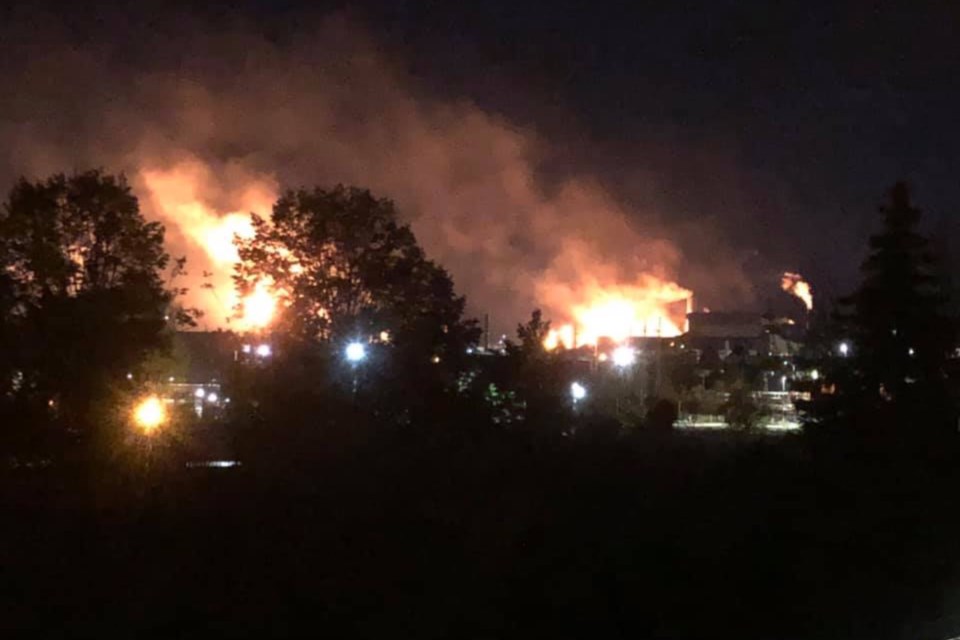A tiny, ruptured steam line at Algoma Steel is responsible for the spectacular gas flares that have perioidically lit up the Sault's west end over the past week.
Brenda Stenta, the steelmaker's manager of communications and branding, says the flaring should stop early next week.
"On Friday, Oct. 18, 2019, we had a one-inch steam line rupture in the by-products plant which resulted in a loss of power to some related processes," Stenta tells SooToday.
"As per protocol, the cokemaking battery flares were lit – two per battery."
"We have three batteries. The flares are a necessary safety mechanism for the safe combustion of surplus fuel when the process is unable to recycle the fuel in normal course through the boilers and the cogeneration plant. Once power was restored the battery flares were extinguished," she said.
"The coke oven gas stack is flared periodically when coke oven gas exceeds operating demand as is the case currently while the booster that distributes coke oven gas to the boilers gets repaired."
Stenta added: "When the booster comes back online early next week, the flare will not be required."
The Ontario government's hourly air quality measurements for Sault Ste. Marie show spikes in fine particulate matter (PM2.5) corresponding to major flares reported by our readers on Friday, Oct. 18 and Sunday, Oct. 20, but Stenta insists particulate levels aren't related to the coke oven flares.
"While particulate matter emissions were somewhat elevated on Friday during the outage (particulate matter - PM10 24-hour rate at our Wallace Terrace air monitoring station measured 12 micrograms per cubic metre that day, and peaked at 44), they have since returned to normal levels."
"Today the total PM10 24 hour rate is measuring at 0 micrograms per cubic metre. The Ministry of Environment, Conservation, and Parks ambient air quality criterion for PM10 is 50 micrograms per cubic metre for a 24-hour period, which is based on a Canada-wide standard," Stenta said.
